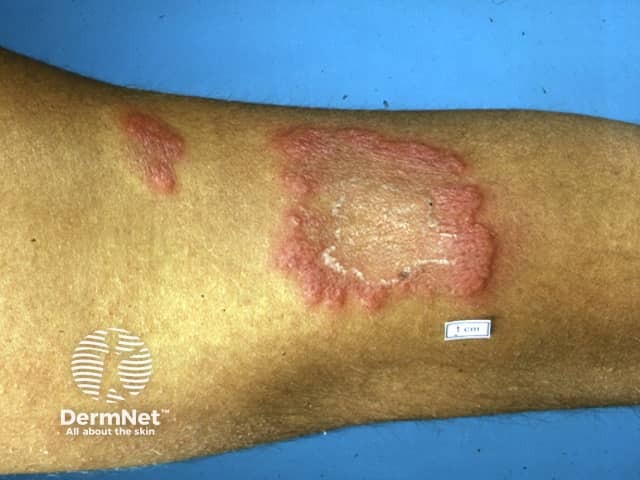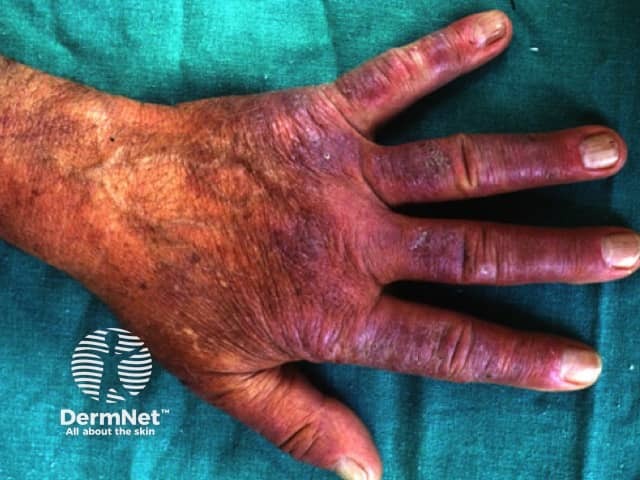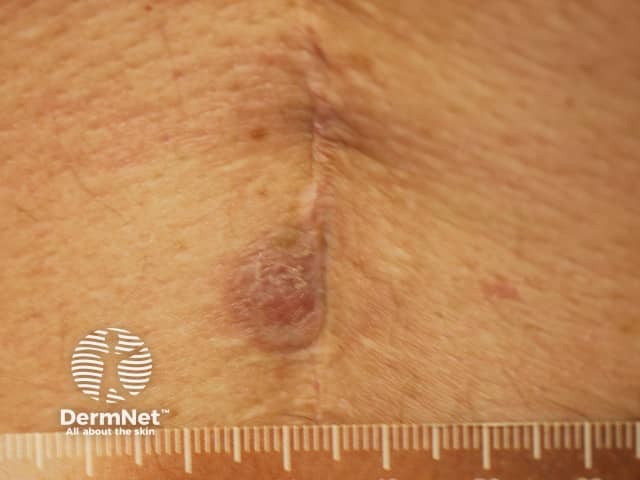Main menu
Common skin conditions

NEWS
Join DermNet PRO
Read more
Quick links
Author: Vanessa Ngan, Staff Writer, 2003. Updated by A/Prof Amanda Oakley, January 2016.
Introduction
Demographics
Causes
Clinical features
Diagnosis
Treatment
Outcome
Erythema elevatum diutinum (EED) is a rare type of necrotising vasculitis that is characterised by red, purple, brown or yellow papules (raised spot), plaques, or nodules, found on the backs of the hands, other extensor surfaces overlying joints, and on the buttocks.

Erythema elevatum diutinum

Erythema elevatum diutinum

Erythema elevatum diutinum
EED may occur in any age group, but patients are typically between 30 and 60 years old. It occurs equally in men and women.
EED is classified as a small vessel vasculitis. The cause of EED is not yet defined, but it has been associated with the following conditions:
Skin biopsy is the most important test to establish a diagnosis of EED; it shows leukocytoclastic vasculitis. See Erythema elevatum diutinum pathology.
Direct immunofluorescence is useful to confirm the presence of an immune complex type of vasculitis.
EED is a chronic and progressive skin disease that may last as long as 25 years. However, in some cases after evolving over a 5–10 year period it may spontaneously clear.
Medication can be used to limit the progression of the disease.
Dapsone is considered the drug of choice for EED, mainly because of its rapid onset of action and clinical experience has shown good responses. However, lesions promptly recur following the withdrawal of the drug.
Other drugs that have been occasionally reported to be effective include:
Oral corticosteroids are generally ineffective.
EED generally persists for months, years or decades. It often recurs after apparently successful treatment.
Textbook of Dermatology. Ed Rook A, Wilkinson DS, Ebling FJB, Champion RH, Burton JL. Fourth edition. Blackwell Scientific Publications.